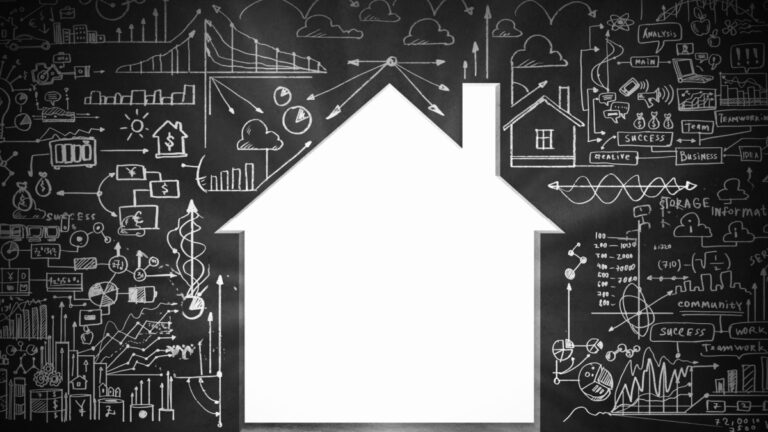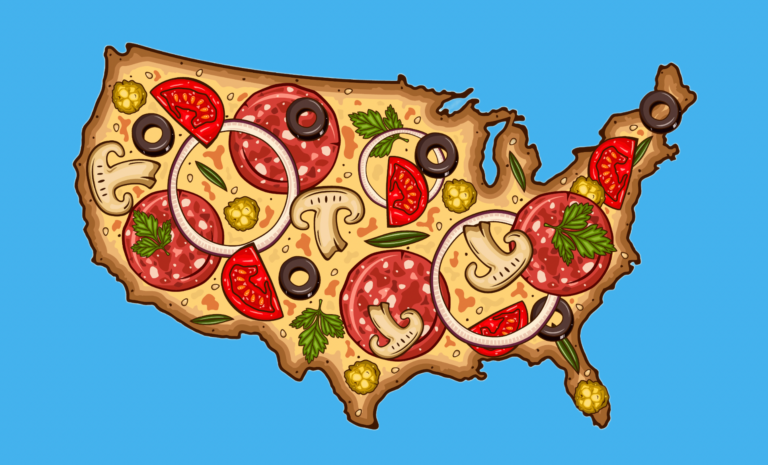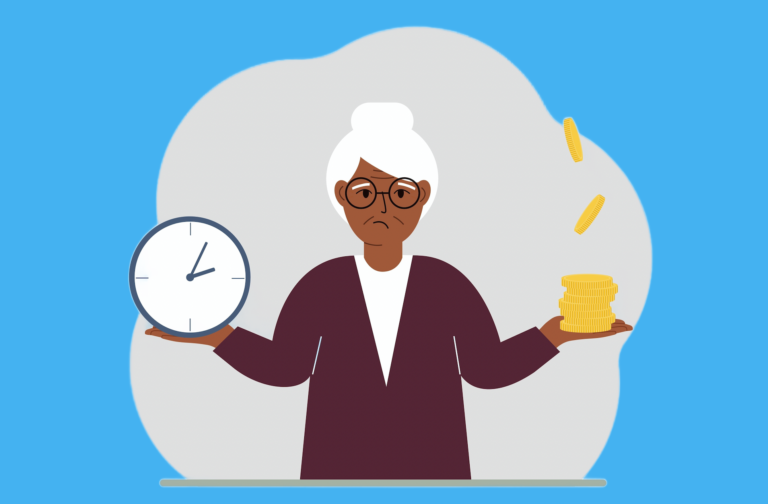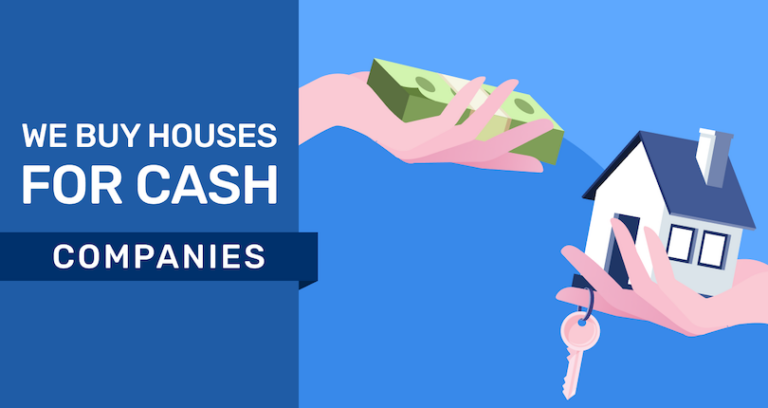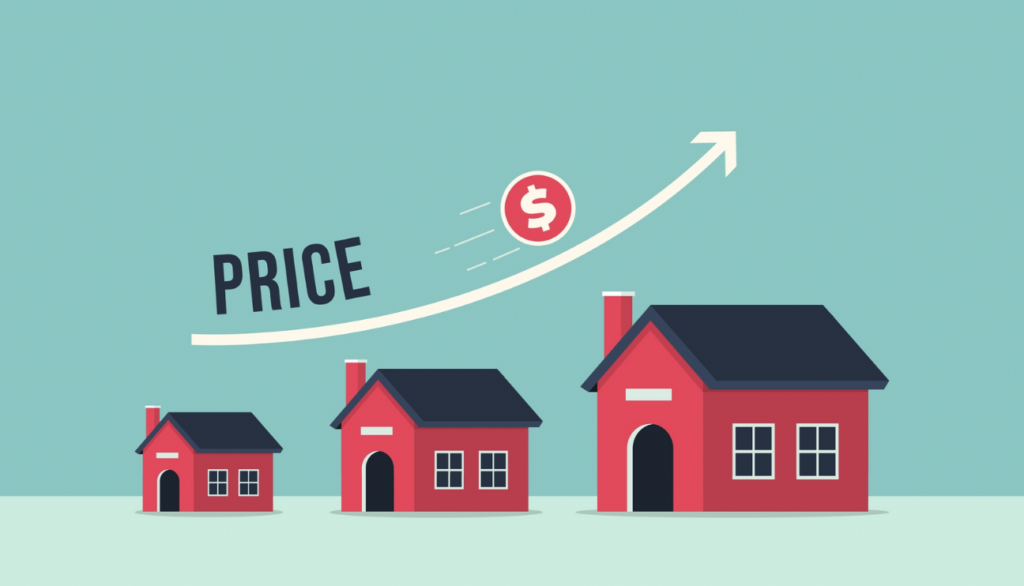
📈 Are Home Prices Rising Faster Than Inflation? 📈
Since 2013, home prices have increased 2x faster than inflation. The median home price is up 63% over the last decade, while overall inflation has increased 31%.
Home Prices vs. Inflation | Affordability: Millennials vs. Boomers | A Reversal in the Trend | Biggest Price Changes by State | Biggest Price Changes by City | America's Wealthiest ZIP Codes
Rising prices have long been a necessary evil of the U.S. economy. Over the past few decades, however, surging housing prices have proved a more prominent villain.
Since the 1960s, home prices have risen 2.4x faster than inflation, according to a new analysis from Clever Real Estate. If home prices had merely kept pace with inflation, the median home would cost only $177,500 today — compared to the $431,000 it actually costs.
Despite Americans' fear of rising inflation, home prices have historically risen much faster. In the last 10 years alone, inflation has increased 31%, while home prices are up 63%.
Homeownership has always been costly, but historically, it has never been this costly. In the 1980s, it took about 3.5 years' worth of household income to purchase the typical home. Today, it takes 6.3 years' worth of household income.
To learn more about the relationship between home prices and inflation, Clever Real Estate conducted a comprehensive analysis of national, statewide, and citywide home prices over time based on data from the Federal Reserve, the Bureau of Labor Statistics, and the Zillow Home Value Index.
Continue reading to see how home prices have left other costs in the dust.
Home Prices and Inflation: Key Statistics 🏡
- Home prices have increased twice as much as overall inflation since 2013. Jump to section 👇
- The median home price increased 63% over that period, while overall inflation rose 31%.
- If home prices kept pace with overall inflation since 1963, the median American home would cost only $177,511 today, instead of $431,000. 👇
- Home prices today are 24x higher than they were in 1963, while inflation is 10x higher.
- Millennials pay nearly twice as much as baby boomers did for homes in 1985. Today, the typical home cost is equivalent to about 6.3 years' worth of median household income, compared to 3.5 years in the mid-1980s. 👇
- For homes to be as affordable today as they were in 1985, the median household would need to earn $134,000 per year — nearly double the actual median of $74,580.
- By 2050, the median home would cost 8.4x the median household income if the current trajectory continues.
- For the first time in 12 years, inflation rose faster than home prices in 2023. 👇
- Hawaii has seen the largest rise in home prices among all states since 2000, with the typical home value quadrupling to $831,808. 👇
- Louisiana has seen the smallest price increase, though prices are still 86% higher than in 2000, up to $194,453 today.
- Of the 50 largest U.S. metros, Miami has seen the sharpest spike in home prices. The typical house in Miami is 4x more expensive today ($472,711) than it was in 2000. 👇
- Cleveland has seen the smallest rise among the 50 largest metros — but there's still been an increase of about $90,000 since 2000, with the typical home now valued at $211,496.
Home Prices Have Grown 2x Faster Than Inflation Since 2013
About 73% of Americans say home prices are unattainably high in their area. It's not just grumbling millennials, either. Majorities of every generation believe home prices are out of reach, according to a recent Clever survey of 1,000 Americans.
The data is on their side. Home prices have increased at a rate 2x higher than overall inflation in the past decade. Inflation has risen 31% since 2013, but the median home price is up 63% — from $264,800 to $431,000.
The gap between inflation and home prices is even more apparent when looking back over the past 60 years.
Home prices today are 2.4x higher than they would be if they had merely kept pace with overall inflation since 1963. The median American home would cost only $177,511 today, compared to the $431,000 it actually costs, according to Federal Reserve data.
In other words, home prices today are 24x higher than they were in 1963, while inflation is 10x higher. For example, $20,000 worth of assorted goods in 1963 would cost $200,000 today — but a $20,000 house in 1963 would cost $480,000 today.
As always, supply and demand is at play. When demand for consumer products rises, it's usually not too complicated to scale up supply. If demand for clothing rises, clothing makers can increase factory output relatively quickly. But building one home takes six or seven months, making it harder for housing supply to catch up with demand.
It's not necessarily a problem for home prices to outpace inflation. Otherwise, homeowners wouldn't benefit much from home-value appreciation when selling. But the fact that home prices have risen so much faster than inflation makes homes widely unaffordable.
The table below shows how home prices have outpaced inflation over the past 60 years.
| Year | Median Home Price | Consumer Price Index (CPI) | Home Prices If Values Kept Pace With CPI | % Median Home-Price Increase Through 2023 | % CPI Increase Through 2023 | Ratio of Home-Price Increase to CPI Increase |
|---|---|---|---|---|---|---|
| 1963 | $17,900 | 30.7 | $17,900 | 2308% | 892% | 2.6 |
| 1964 | $18,900 | 31.0 | $18,092 | 2180% | 881% | 2.5 |
| 1965 | $20,200 | 31.6 | $18,419 | 2034% | 864% | 2.4 |
| 1966 | $21,500 | 32.5 | $18,927 | 1905% | 838% | 2.3 |
| 1967 | $22,500 | 33.4 | $19,481 | 1816% | 811% | 2.2 |
| 1968 | $24,800 | 34.9 | $20,355 | 1638% | 772% | 2.1 |
| 1969 | $25,900 | 36.8 | $21,464 | 1564% | 727% | 2.2 |
| 1970 | $23,000 | 38.9 | $22,689 | 1774% | 682% | 2.6 |
| 1971 | $25,300 | 40.6 | $23,680 | 1604% | 650% | 2.5 |
| 1972 | $27,900 | 41.8 | $24,380 | 1445% | 628% | 2.3 |
| 1973 | $33,500 | 44.2 | $25,780 | 1187% | 589% | 2.0 |
| 1974 | $36,200 | 49.3 | $28,754 | 1091% | 517% | 2.1 |
| 1975 | $38,800 | 54.0 | $31,496 | 1011% | 464% | 2.2 |
| 1976 | $44,400 | 57.0 | $33,245 | 871% | 434% | 2.0 |
| 1977 | $48,800 | 60.8 | $35,462 | 783% | 401% | 2.0 |
| 1978 | $56,100 | 65.5 | $38,203 | 668% | 365% | 1.8 |
| 1979 | $64,700 | 73.0 | $42,577 | 566% | 317% | 1.8 |
| 1980 | $64,900 | 82.6 | $48,177 | 564% | 268% | 2.1 |
| 1981 | $69,200 | 91.5 | $53,368 | 523% | 233% | 2.3 |
| 1982 | $69,300 | 97.5 | $56,867 | 522% | 212% | 2.5 |
| 1983 | $77,400 | 99.8 | $58,209 | 457% | 205% | 2.2 |
| 1984 | $81,000 | 104.1 | $60,717 | 432% | 192% | 2.3 |
| 1985 | $83,200 | 107.7 | $62,816 | 418% | 183% | 2.3 |
| 1986 | $93,000 | 109.5 | $63,866 | 363% | 178% | 2.0 |
| 1987 | $106,000 | 113.8 | $66,374 | 307% | 167% | 1.8 |
| 1988 | $115,000 | 118.5 | $69,115 | 275% | 157% | 1.8 |
| 1989 | $120,000 | 124.5 | $72,615 | 259% | 144% | 1.8 |
| 1990 | $117,000 | 130.5 | $76,114 | 268% | 133% | 2.0 |
| 1991 | $120,000 | 136.2 | $79,439 | 259% | 123% | 2.1 |
| 1992 | $120,000 | 140.5 | $81,947 | 259% | 117% | 2.2 |
| 1993 | $127,000 | 144.5 | $84,280 | 239% | 111% | 2.2 |
| 1994 | $129,700 | 148.4 | $86,555 | 232% | 105% | 2.2 |
| 1995 | $132,000 | 152.6 | $89,004 | 227% | 99% | 2.3 |
| 1996 | $140,000 | 157.0 | $91,571 | 208% | 94% | 2.2 |
| 1997 | $145,000 | 160.4 | $93,554 | 197% | 90% | 2.2 |
| 1998 | $153,000 | 163.2 | $95,187 | 182% | 86% | 2.1 |
| 1999 | $159,100 | 166.7 | $97,228 | 171% | 83% | 2.1 |
| 2000 | $168,800 | 172.7 | $100,728 | 155% | 76% | 2.0 |
| 2001 | $172,500 | 177.4 | $103,469 | 150% | 72% | 2.1 |
| 2002 | $178,100 | 180.0 | $104,985 | 142% | 69% | 2.1 |
| 2003 | $191,900 | 183.7 | $107,143 | 125% | 66% | 1.9 |
| 2004 | $213,500 | 189.1 | $110,293 | 102% | 61% | 1.7 |
| 2005 | $236,400 | 194.9 | $113,676 | 82% | 56% | 1.5 |
| 2006 | $235,600 | 202.9 | $118,342 | 83% | 50% | 1.7 |
| 2007 | $241,800 | 207.6 | $121,085 | 78% | 47% | 1.7 |
| 2008 | $226,500 | 219.0 | $127,741 | 90% | 39% | 2.3 |
| 2009 | $214,300 | 214.7 | $125,239 | 101% | 42% | 2.4 |
| 2010 | $224,100 | 217.6 | $126,919 | 92% | 40% | 2.3 |
| 2011 | $223,500 | 225.4 | $131,462 | 93% | 35% | 2.7 |
| 2012 | $248,800 | 228.6 | $133,326 | 73% | 33% | 2.2 |
| 2013 | $264,800 | 232.9 | $135,839 | 63% | 31% | 2.1 |
| 2014 | $281,000 | 237.5 | $138,521 | 53% | 28% | 1.9 |
| 2015 | $295,800 | 238.0 | $138,834 | 46% | 28% | 1.6 |
| 2016 | $303,800 | 240.1 | $140,039 | 42% | 27% | 1.6 |
| 2017 | $320,500 | 244.2 | $142,455 | 34% | 25% | 1.4 |
| 2018 | $330,900 | 251.2 | $146,521 | 30% | 21% | 1.4 |
| 2019 | $318,400 | 255.7 | $149,129 | 35% | 19% | 1.9 |
| 2020 | $337,500 | 258.3 | $150,641 | 28% | 18% | 1.6 |
| 2021 | $411,200 | 271.8 | $158,507 | 5% | 12% | 0.4 |
| 2022 | $468,000 | 294.6 | $171,842 | -8% | 3% | -2.4 |
| 2023 | $431,000 | 304.3 | $177,512 | 0% | 0% | N/A |
Millennials vs. Boomers: Why Millennials Pay Nearly Double for Homes
Historically, high demand has caused home prices to rise faster than the typical American's income. That trend has resulted in homes becoming much less affordable for younger Americans than previous generations.
In fact, homes are nearly twice as expensive for millennials as they were for baby boomers in their 30s, when adjusting for the typical income. When boomers were in their 30s, around 1985, the median home was 3.5x more expensive than the median household income. The median household income was $23,620, and the median home price was $83,200.
In 2022, when most millennials were in their 30s, the median home price was 6.3x more expensive than the median household income. The median household income was $74,580, and the median home price was $468,000.
That increase — going from 3.5 years’ worth of income to 6.3 years’ worth of income — means homes are 80% more expensive for millennials than they were for their parents' generation.
For homes to be as affordable as they were in 1985, the median household would need to earn $134,000 per year — nearly double the current median of $74,580.
If the trend continues at its current pace, the median home in 2030 would cost 6.9x the median household income. By 2050, the median home would cost 8.4x the median household income.
Across the board, today's incomes are 3.2x higher than in 1985, but home prices are 5.6x higher. The table below shows how the home-price-to-income ratio has gotten worse over the past four decades.
| Year | Median Home Sale Price | Median Household Income | Home-Price-to-Income Ratio |
|---|---|---|---|
| 1985 | $83,200 | $23,620 | 3.5 |
| 1986 | $93,000 | $24,900 | 3.7 |
| 1987 | $106,000 | $26,060 | 4.1 |
| 1988 | $115,000 | $27,230 | 4.2 |
| 1989 | $120,000 | $28,910 | 4.2 |
| 1990 | $117,000 | $29,940 | 3.9 |
| 1991 | $120,000 | $30,130 | 4.0 |
| 1992 | $120,000 | $30,640 | 3.9 |
| 1993 | $127,000 | $31,240 | 4.1 |
| 1994 | $129,700 | $32,260 | 4.0 |
| 1995 | $132,000 | $34,080 | 3.9 |
| 1996 | $140,000 | $35,490 | 3.9 |
| 1997 | $145,000 | $37,010 | 3.9 |
| 1998 | $153,000 | $38,890 | 3.9 |
| 1999 | $159,100 | $40,700 | 3.9 |
| 2000 | $168,800 | $41,990 | 4.0 |
| 2001 | $172,500 | $42,230 | 4.1 |
| 2002 | $178,100 | $42,410 | 4.2 |
| 2003 | $191,900 | $43,320 | 4.4 |
| 2004 | $213,500 | $44,330 | 4.8 |
| 2005 | $236,400 | $46,330 | 5.1 |
| 2006 | $235,600 | $48,200 | 4.9 |
| 2007 | $241,800 | $50,230 | 4.8 |
| 2008 | $226,500 | $50,300 | 4.5 |
| 2009 | $214,300 | $49,780 | 4.3 |
| 2010 | $224,100 | $49,280 | 4.5 |
| 2011 | $223,500 | $50,050 | 4.5 |
| 2012 | $248,800 | $51,020 | 4.9 |
| 2013 | $264,800 | $53,590 | 4.9 |
| 2014 | $281,000 | $53,660 | 5.2 |
| 2015 | $295,800 | $56,520 | 5.2 |
| 2016 | $303,800 | $59,040 | 5.1 |
| 2017 | $320,500 | $61,140 | 5.2 |
| 2018 | $330,900 | $63,180 | 5.2 |
| 2019 | $318,400 | $68,700 | 4.6 |
| 2020 | $337,500 | $68,010 | 5.0 |
| 2021 | $411,200 | $70,780 | 5.8 |
| 2022 | $468,000 | $74,580 | 6.3 |
A lack of housing supply is, again, one of the key drivers of rising home prices. In 1985, there was little to no deficit in the supply of available homes. As of 2023, the U.S. had a shortage of 3.2 million homes.
Homes that are being built tend to be bigger and more expensive. The average home today is 50% larger than the average home in 1985, despite fewer people living in the typical household.
To be fair, home buyers in the 1980s did face higher mortgage rates, but those rates also came with opportunities to refinance down the line.
A Reversal in the Trend: Inflation Catching up to Home Prices
Although, historically, home prices have significantly outpaced inflation, 2023 bucked the trend. Home prices rose only 2.6%, compared to inflation's 3.3%.
In March 2022, inflation caught up to home price growth, and since June 2022, overall inflation has exceeded home price growth, according to Zillow's Home Value Index. The last time this occurred over a full calendar year was in 2011.
This recent change isn’t enough to overcome decades of home-price growth exceeding inflation, but it does mean that, for the moment, home prices aren’t accelerating faster than inflation, like they have historically.
To combat high inflation in 2022, the Federal Reserve raised interest rates to slow consumer spending. Lenders followed by raising mortgage rates, causing homes to become a less attractive investment to potential buyers, resulting in lower demand for homes.
With less demand, more homes sat on the market for longer. Sellers in many areas had to lower their asking prices, slowing the overall growth of home prices.
The chart below shows how home prices leveled off as lenders ratcheted up rates.
It's hard to understate how radically an increase of a few percentage points in interest can change one's monthly mortgage payments. In 2021, when interest rates were about 3%, the estimated monthly mortgage payment on a $500,000 home was about $2,100. In 2023 at 7% interest, the same home would require a monthly mortgage payment of roughly $3,300.
Over the life of that loan, 2023 buyers would pay around $1.2 million in total, while 2021 buyers would pay about $760,000 in total for the same property.
States With the Biggest (and Smallest) Increases in Home Price
Real estate prices are highly localized. The median state has seen its typical home value rise 159% since 2000, but some areas have seen even sharper price spikes of up to 300% since 2000.
Hawaii has seen the most jarring increase of any state, with home prices quadrupling from about $203,000 to over $831,000 since the start of the millennium.
At the other end of the spectrum, Louisiana has had the slowest price growth since 2000 but has still seen prices nearly double to over $194,000.
The table below shows the home-price increase since 2000 for each state with available data, as well as Washington, D.C.
| Rank | State | % Increase From 2000 to 2023 | Typical Home Value in 2000 | Typical Home Value in 2023 |
|---|---|---|---|---|
| 1 | Hawaii | 309% | $203,442 | $831,808 |
| 2 | California | 259% | $207,139 | $743,435 |
| 3 | Idaho | 258% | $120,708 | $432,307 |
| 4 | District of Columbia | 254% | $170,771 | $603,852 |
| 5 | Florida | 248% | $111,863 | $389,325 |
| 6 | Maine | 240% | $111,814 | $379,933 |
| 7 | Vermont | 219% | $117,185 | $373,709 |
| 8 | Washington | 216% | $178,119 | $562,290 |
| 9 | Oregon | 214% | $152,661 | $479,906 |
| 10 | Rhode Island | 213% | $138,673 | $434,576 |
| 11 | New Hampshire | 213% | $142,381 | $445,323 |
| 12 | Arizona | 203% | $138,411 | $418,836 |
| 13 | Utah | 191% | $172,047 | $500,981 |
| 14 | Virginia | 189% | $128,519 | $371,528 |
| 15 | Tennessee | 179% | $109,668 | $305,570 |
| 16 | Colorado | 179% | $189,092 | $526,779 |
| 17 | New York | 178% | $162,226 | $451,434 |
| 18 | South Dakota | 178% | $102,901 | $286,054 |
| 19 | Massachusetts | 177% | $211,737 | $585,959 |
| 20 | New Jersey | 176% | $179,668 | $495,287 |
| 21 | Nevada | 167% | $156,791 | $418,366 |
| 22 | Texas | 166% | $110,577 | $293,824 |
| 23 | Alaska | 160% | $133,374 | $346,818 |
| 24 | Maryland | 159% | $154,655 | $400,707 |
| 25 | Pennsylvania | 153% | $100,542 | $254,152 |
| 26 | South Carolina | 148% | $114,190 | $283,316 |
| 27 | Delaware | 146% | $150,968 | $371,811 |
| 28 | Georgia | 146% | $128,186 | $315,612 |
| 29 | North Carolina | 144% | $129,409 | $316,103 |
| 30 | Kansas | 140% | $88,601 | $212,995 |
| 31 | Oklahoma | 138% | $82,325 | $195,594 |
| 32 | Minnesota | 137% | $133,918 | $316,978 |
| 33 | Missouri | 136% | $99,564 | $234,836 |
| 34 | Wisconsin | 135% | $118,961 | $279,488 |
| 35 | Indiana | 132% | $97,730 | $227,178 |
| 36 | Kentucky | 128% | $85,331 | $194,848 |
| 37 | Arkansas | 125% | $87,151 | $196,406 |
| 38 | Iowa | 125% | $91,445 | $205,375 |
| 39 | Connecticut | 123% | $169,235 | $377,247 |
| 40 | Alabama | 119% | $98,746 | $216,564 |
| 41 | Nebraska | 116% | $113,625 | $245,663 |
| 42 | West Virginia | 109% | $73,730 | $154,371 |
| 43 | Ohio | 101% | $106,265 | $213,149 |
| 44 | Mississippi | 97% | $87,854 | $172,965 |
| 45 | Michigan | 92% | $119,142 | $228,329 |
| 46 | Illinois | 88% | $131,832 | $247,948 |
| 47 | Louisiana | 86% | $104,800 | $194,453 |
| Home price data for Montana, New Mexico, Wyoming, and North Dakota from 2000 was not available. | ||||
Metros With the Biggest (and Smallest) Increases in Home Price
Home-price increases in individual cities have been just as dramatic as statewide spikes. Of the country's 50 largest metro areas, 14 have seen their typical home price at least triple since 2000:
- Miami, FL
- Riverside, CA
- Los Angeles, CA
- San Diego, CA
- Tampa, FL
- San Jose, CA
- San Francisco, CA
- Orlando, FL
- Sacramento, CA
- Seattle, WA
- Providence, RI
- Phoenix, AZ
- Portland, OR
- Nashville, TN
Miami has undergone the largest upswing, with the typical home costing $472,000 — about 4x more than in 2000.
Cleveland experienced the smallest increase in home prices among the country's 50 largest metros, but prices have still risen $90,000 since 2000 — with the typical home now valued at $211,496. Many of the metro areas with the smallest increases have seen homes double in price since 2000.
The table below shows the home value increase since 2000 for 49 of the country's 50 largest metro areas. Data for Indianapolis was not available.
| Rank | Metro | % Increase From 2000 to 2023 | Typical Home Value in 2000 | Typical Home Value in 2023 |
|---|---|---|---|---|
| 1 | Miami, FL | 299% | $118,450 | $472,711 |
| 2 | Riverside, CA | 284% | $145,096 | $557,824 |
| 3 | Los Angeles, CA | 280% | $237,393 | $901,342 |
| 4 | San Diego, CA | 269% | $243,287 | $896,575 |
| 5 | Tampa, FL | 254% | $105,392 | $372,746 |
| 6 | San Jose, CA | 234% | $437,437 | $1,463,059 |
| 7 | San Francisco, CA | 225% | $338,431 | $1,099,420 |
| 8 | Orlando, FL | 217% | $121,519 | $384,720 |
| 9 | Sacramento, CA | 206% | $181,337 | $555,739 |
| 10 | Seattle, WA | 206% | $227,407 | $695,671 |
| 11 | Providence, RI | 206% | $147,312 | $450,199 |
| 12 | Phoenix, AZ | 205% | $145,824 | $444,802 |
| 13 | Portland, OR | 204% | $173,625 | $528,063 |
| 14 | Nashville, TN | 203% | $140,576 | $426,065 |
| 15 | Jacksonville, FL | 197% | $118,209 | $350,615 |
| 16 | Salt Lake City, UT | 194% | $178,413 | $524,328 |
| 17 | Dallas, TX | 188% | $126,227 | $363,272 |
| 18 | Washington, DC | 184% | $189,355 | $538,701 |
| 19 | Buffalo, NY | 183% | $85,575 | $241,954 |
| 20 | Virginia Beach, VA | 178% | $119,572 | $332,715 |
| 21 | Denver, CO | 177% | $204,815 | $566,433 |
| 22 | Philadelphia, PA | 176% | $123,986 | $341,744 |
| 23 | Richmond, VA | 175% | $126,687 | $348,713 |
| 24 | Boston, MA | 174% | $237,783 | $650,424 |
| 25 | New York, NY | 165% | $237,211 | $628,951 |
| 26 | Austin, TX | 161% | $173,704 | $452,883 |
| 27 | San Antonio, TX | 159% | $108,592 | $281,632 |
| 28 | Las Vegas, NV | 158% | $157,448 | $405,854 |
| 29 | Baltimore, MD | 156% | $143,827 | $367,544 |
| 30 | Charlotte, NC | 154% | $144,493 | $367,282 |
| 31 | Kansas City, MO | 153% | $113,153 | $286,747 |
| 32 | Raleigh, NC | 148% | $173,419 | $429,460 |
| 33 | Houston, TX | 146% | $121,637 | $298,766 |
| 34 | Oklahoma City, OK | 145% | $91,409 | $224,198 |
| 35 | Atlanta, GA | 143% | $152,171 | $370,261 |
| 36 | Pittsburgh, PA | 138% | $84,708 | $201,611 |
| 37 | Columbus, OH | 135% | $125,821 | $295,787 |
| 38 | Minneapolis, MN | 129% | $155,654 | $355,820 |
| 39 | Milwaukee, WI | 124% | $142,448 | $319,134 |
| 40 | Louisville, KY | 121% | $110,056 | $243,515 |
| 41 | Hartford, CT | 119% | $152,831 | $334,430 |
| 42 | Birmingham, AL | 118% | $112,526 | $244,942 |
| 43 | Cincinnati, OH | 110% | $127,047 | $267,184 |
| 44 | St. Louis, MO | 108% | $114,120 | $237,844 |
| 45 | Memphis, TN | 104% | $113,375 | $230,760 |
| 46 | Chicago, IL | 89% | $159,104 | $300,549 |
| 47 | Detroit, MI | 83% | $128,679 | $235,480 |
| 48 | New Orleans, LA | 78% | $131,771 | $235,103 |
| 49 | Cleveland, OH | 78% | $119,097 | $211,496 |
| Washington, D.C., appears in the city and state tables. The district proper has seen a lower rise in home prices than the metro area as a whole, which is why its percentages are different in each table. | ||||
America's Wealthiest ZIP Codes
Zooming in further reveals just how expensive some areas have become. Four ZIP codes in the U.S. now have a typical home price of over $5 million.
The ZIP codes with the highest home prices are shown below.
| Rank | ZIP Code | City | State | Typical Home Value in 2023 |
|---|---|---|---|---|
| 1 | 94027 | Atherton | CA | $7,447,150 |
| 2 | 33109 | Miami Beach | FL | $5,675,294 |
| 3 | 90210 | Beverly Hills | CA | $5,243,140 |
| 4 | 11962 | Sagaponack | NY | $5,168,916 |
| 5 | 93108 | Montecito | CA | $4,503,435 |
| 6 | 94022 | Los Altos | CA | $4,495,775 |
| 7 | 92657 | Newport Beach | CA | $4,378,430 |
| 8 | 11976 | Water Mill | NY | $4,372,420 |
| 9 | 31561 | Sea Island | GA | $4,365,388 |
| 10 | 81656 | Woody Creek | CO | $4,336,373 |
Three metros have climbed into the top 10 since last year — one in Miami Beach, Florida, another in a coastal community about 50 miles south of Savannah, Georgia, and one in the Aspen, Colorado, area.
Unfortunately, research suggests high home values come with not only financial costs but social costs, too. A 2023 analysis found a strong correlation between expensive home values and high rates of homelessness in large metro areas.
Methodology
Data for this study came from numerous sources. Home pricing data was provided by Zillow and the Federal Reserve. Mortgage rate data was provided by Freddie Mac and the Federal Reserve. Inflation data in the form of the Consumer Price Index was provided by the Bureau of Labor Statistics and the Federal Reserve. Population and income data was provided by the U.S. Census.
About Clever
Since 2017, Clever Real Estate has been on a mission to make selling or buying a home easier and more affordable for everyone. 12 million annual readers rely on Clever's library of educational content and data-driven research to make smarter real estate decisions—and to date, Clever has helped consumers save more than $160 million on realtor fees. Clever's research has been featured in The New York Times, Business Insider, Inman, HousingWire, and many more.
More Research From Clever
Articles You May Like
Frequently Asked Questions About the Housing Market and Inflation
Do home prices appreciate faster than inflation?
Since 2013, home prices have risen twice as fast as inflation in the U.S. Inflation has increased 31% over the past decade, while the median home price has increased 63% — up to $431,000. Learn more about home prices and inflation.
What was the average cost of a house in 1985?
The median home price in 1985 was $83,200, about 3.5x higher than the typical household income of $23,620. Learn more about how today's home prices compare to historic home prices in the U.S.
Is inflation good for homeowners?
A temporary spike in inflation can benefit homeowners who are paying off a fixed-rate mortgage. Inflation generally helps borrowers and hurts lenders because loans can be paid off using fewer real dollars. Learn more about home prices and inflation.

